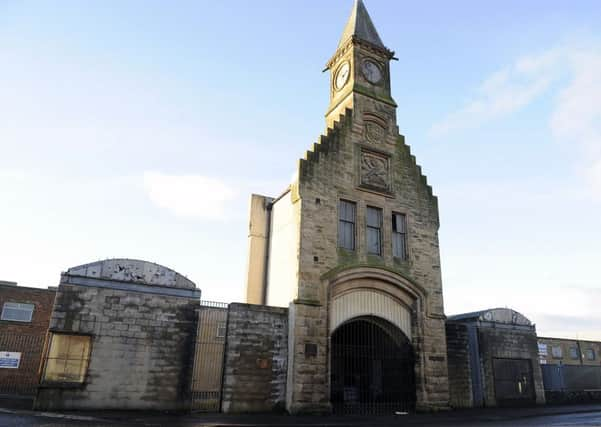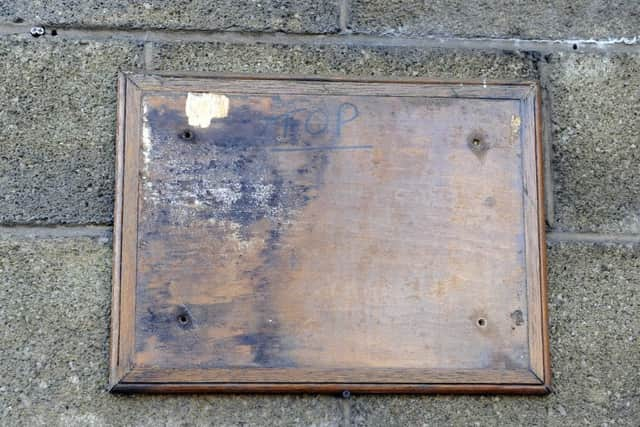Tribute to Robert Burns at Carron Works disappears


The visit of Robert Burns to the site on August 26, 1787, with companion Willie Nicol, has been well documented historically as he was refused entry at the main gate where the clock tower stands today.
Expecting to be welcomed in, the porter turned them away as due to a security measure, visitors could not enter on a Sunday and only with a ticket on other days of the week.
Advertisement
Hide AdAdvertisement
Hide AdBurns, who was born the same year the Carron Works was established, vented his anger by recording the event in his journal and scored a few lines on the window of the Carron Inn, prompting a witty response from one of the works’ clerks, William Benson.


The plastic plaque commemorating the event was placed on the clock tower wall in 2012 as a tribute led by Baillie Billy Buchanan in a ceremony attended by local historians and Falkirk Provost Pat Reid.
While the event is historically important, the plaque itself is not.
To see the words Robert Burns wrote about the visit and Mr Benson’s response, go to www.falkirkherald.co.uk.
Source: Falkirk History Society


Advertisement
Hide AdAdvertisement
Hide AdThe bard and Carron Works always had one thing in common – their year of birth – 1759. Probably late on the morning of Sunday 26th August 1787, Robert Burns and his companion Willie Nicol, classical master at the Royal High School Edinburgh, crossed the ‘Great Canal’ and made their way towards Carron Works.
At the main gate, situated where the clocktower is today, they hammered on the door expecting to be welcomed in, but the porter turned them away.
Little did Burns know that as a security measure years before, it had been deemed necessary to refuse visitors entrance to the Works on Sundays and only to allow admission on other days with a ticket.
Both travellers instead withdrew to the Carron Inn opposite. They dined on the second floor of the Inn and Burns later recorded the event briefly in his journal of the tour - Carron-breakfast.
Advertisement
Hide AdAdvertisement
Hide AdHowever, he also vented his anger, by scoring a few lines of prose on one of the Inn’s windows. He used a diamond-tipped stylus which had earlier been presented to him in Edinburgh by James Cunningham, 14th Earl of Glencairn:
We cam na here to view your works
In hopes to be mair wise,
But only, lest we gang to Hell,
It may be nae surprise;
But when we tirl’d at your door,
Your porter dought na hear us;
Sae may, should we to Hell’s yetts come,
Your billy Satan sair us.
These lines were seen by William Benson, a clerk at Carron Works (from 1765), and were duly copied into an order book. Benson was a clever and enterprising man who would later hold two company shares and part ownership of a boat called the ‘Jamie and Jenny’. He penned a reply:
If you came here to view our works
You should have been more civil
Than to give a fictitious name,
In hopes to cheat the devil,
Six days a week to you and all,
We think it very well;
The other if you go to church,
May keep you out of hell.
The travellers then departed in the direction of Larbert where they entered the old churchyard and stood before the cast-iron monument erected two years previously by James Bruce of Kinnaird, in memory of his late wife, Mary Dundas.
It could be argued that Burns had been specifically directed there, perhaps by the innkeeper (who later became a subscriber to his works), to view this fine example of Carron workmanship. Carron Works apparently hadn’t seen the last of Robert Burns.
Advertisement
Hide AdAdvertisement
Hide AdAbout one month later, he was accompanied by Dr James Adair, who later recalled in 1798: “We visited the Ironworks at Carron, with which the poet was forcibly struck.”
He added: “The resemblance between that place and its inhabitants to the cave of the Cyclops, which must have occurred to every classical reader, presented itself to Burns.”
William Harvey, author of “Robert Burns in Stirlingshire” published in 1899, was in no doubt that Burns had gained admission to the works during this mid-week visit and stated that the poet had also remarked: “The blazing furnaces and melting iron realized the description of the giants forging thunderbolts.”
This ‘description’ given by Burns, had possibly had its source in Barthelmy Faujas de St Fond’s “Travels in England and Scotland” (Vol. 1). written in 1784 after a visit to the Carron Works, “the cavern where Vulcan and his Cyclops are busy forging thunderbolts.”
Advertisement
Hide AdAdvertisement
Hide AdBurns’ biographer Allan Cunningham wrote in 1834: “The gates were opened with an apology for former rudeness, which mollified the bard.”
Brian Watters 2005
Falkirk Local History Society has a fascinating catalogue of historical data relating to the district. See more at www.falkirklocalhistorysociety.co.uk Burns Night is held every year on January 25 when formal and informal events are organised across the world celebrating the works of Robert Burns through poetry, music and a traditional dinner of tatties, haggis and neeps.
Some whisky also may be consumed at these gatherings.